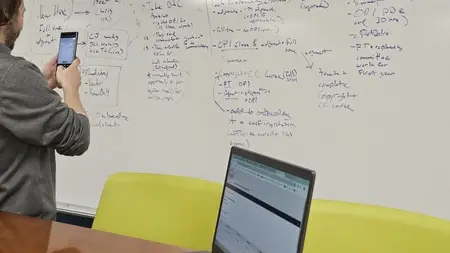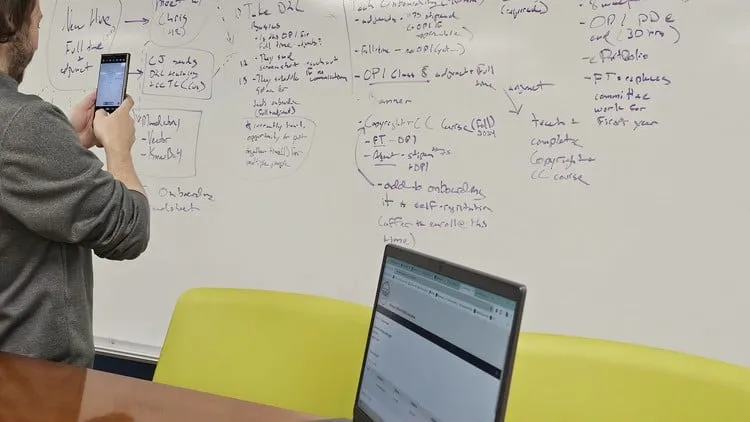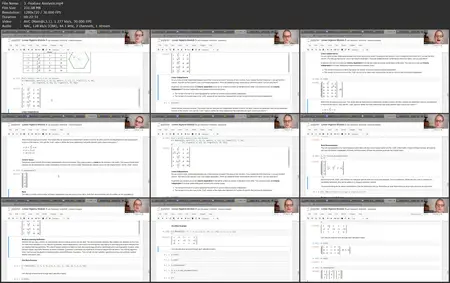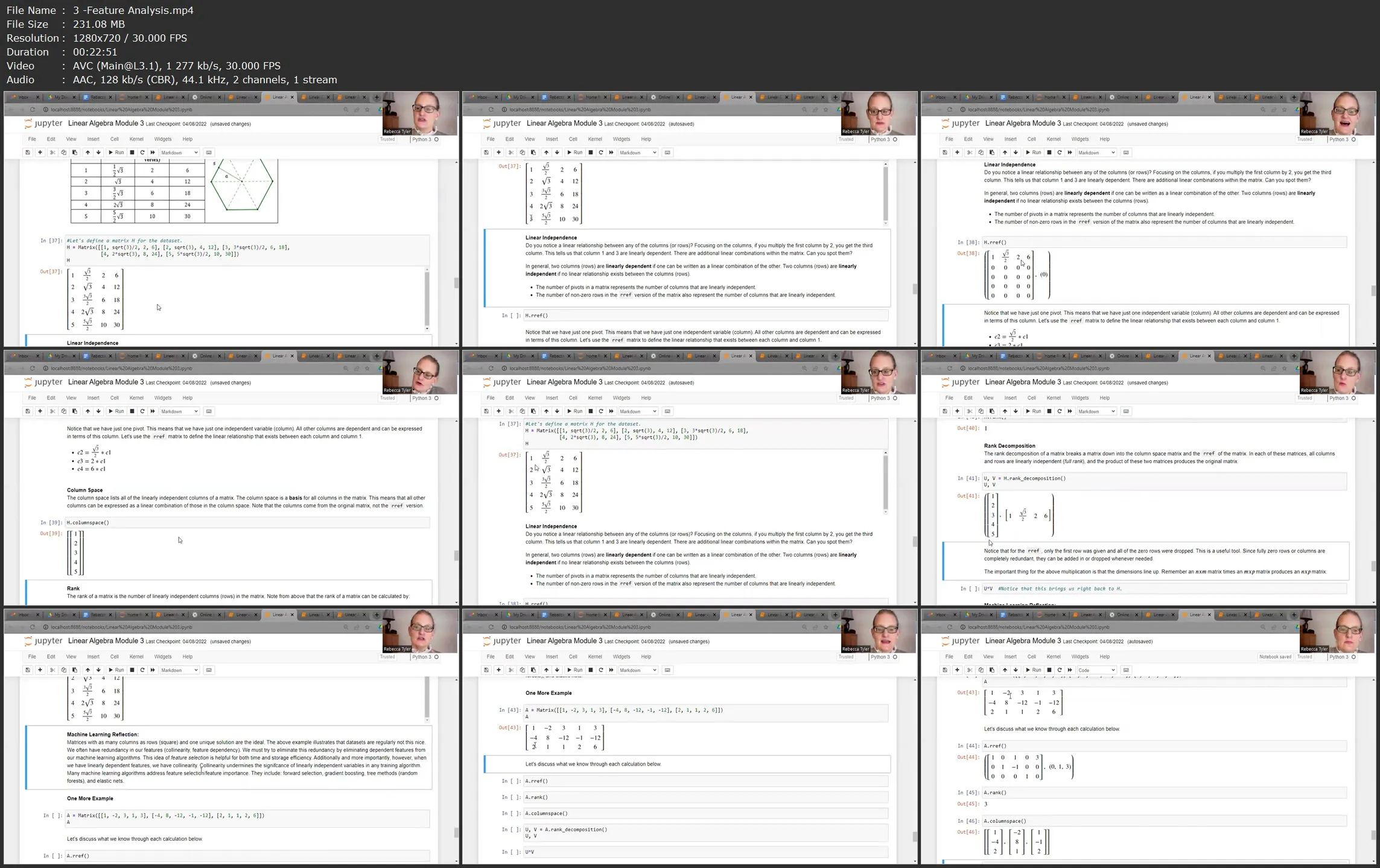Linear Algebra for Machine Learning/AI with no math prereqs
.MP4, AVC, 1280x720, 30 fps | English, AAC, 2 Ch | 4h 24m | 2.54 GB
Instructor: Rebecca Tyler
.MP4, AVC, 1280x720, 30 fps | English, AAC, 2 Ch | 4h 24m | 2.54 GB
Instructor: Rebecca Tyler
Jupyter Notebooks, Python, and LaTex will be utilized. No math prerequisites!
What you'll learn
- Learners will render correct mathematical symbology using LaTeX (the mathematical standard), which includes using a LaTeX editor.
- Learners will utilize Python’s sympy library to perform symbolic mathematical calculations.
- Learners will distinguish between scalars, vectors, matrices, and tensors.
- Learners will perform linear algebra operations mentally, by hand, and using Python (sympy).
- Learners will interpret 2D and 3D graphs in terms of matrices and and/or vectors.
- Learners will analyze various methods for utilizing Python matrices in terms of time, memory, and efficiency.
- Given an rref matrix, learners will calculate the rank and column space of the matrix.
- Learners will apply linear algebra knowledge to make decisions about feature importance/feature selection.
- Learners will recognize and construct linear transformations including, rotating, reflecting, and scaling.
- Learners will apply the inverse of a transformation, when possible, to get back to the original dataset.
- Learners will graphically convey the relationship between eigenvalues, eigenvectors, and their original transformation matrix.
- Given an eigenvector, learners will construct an eigenspace.
- Given eigenvalues and eigenvectors, learners will perform an eigendecomposition of a matrix.
Requirements
- No math prerequisites. No programming prerequisites.
- Access to Python or Colab. All code is provided; however, you should have a general working understanding of Python.
Description
This course represents the capstone project for my Master of Science degree in Data Science, completed in 2022. As a mathematics educator by trade, with advanced degrees in both mathematics (M.S.) and adult education (Ed.D.), I wanted to design a project that would bridge the gap between theory-heavy mathematics and practical applications in machine learning and artificial intelligence. My goal was to create a learning experience that opens doors to advanced mathematical thinking, even for learners who may not have taken prerequisite math courses. Out of that vision, this five-module course was born.
In this course, you will intuitively and visually explore critical concepts in linear algebra, including linear transformations, eigenvalue and eigenvector decompositions, and the underlying structures that drive many machine learning algorithms. The approach avoids unnecessary abstraction and instead emphasizes hands-on learning through visualization, real-world applications, and code demonstrations. Along the way, you will also be introduced to LaTeX, the mathematical standard for writing and formatting equations, which will enhance your ability to communicate technical content professionally.
By the end of the course, you will apply your knowledge of linear algebra to practical tasks, such as evaluating feature importance and selecting features in datasets—key skills for improving the performance of machine learning models. You will also analyze and compare different methods for implementing Python matrices, paying close attention to trade-offs in time complexity, memory consumption, and computational efficiency. Through Jupyter Notebooks, Python code, and LaTeX, you will see these ideas come alive in a modern data science workflow.
I hope you find this course both engaging and empowering, and that it sparks your curiosity to dive even deeper into the mathematics behind machine learning.
Who this course is for:
- Beginning Python developers
- Machine learning/AI enthusiasts
- Data science majors
- Mathematics enthusiasts





